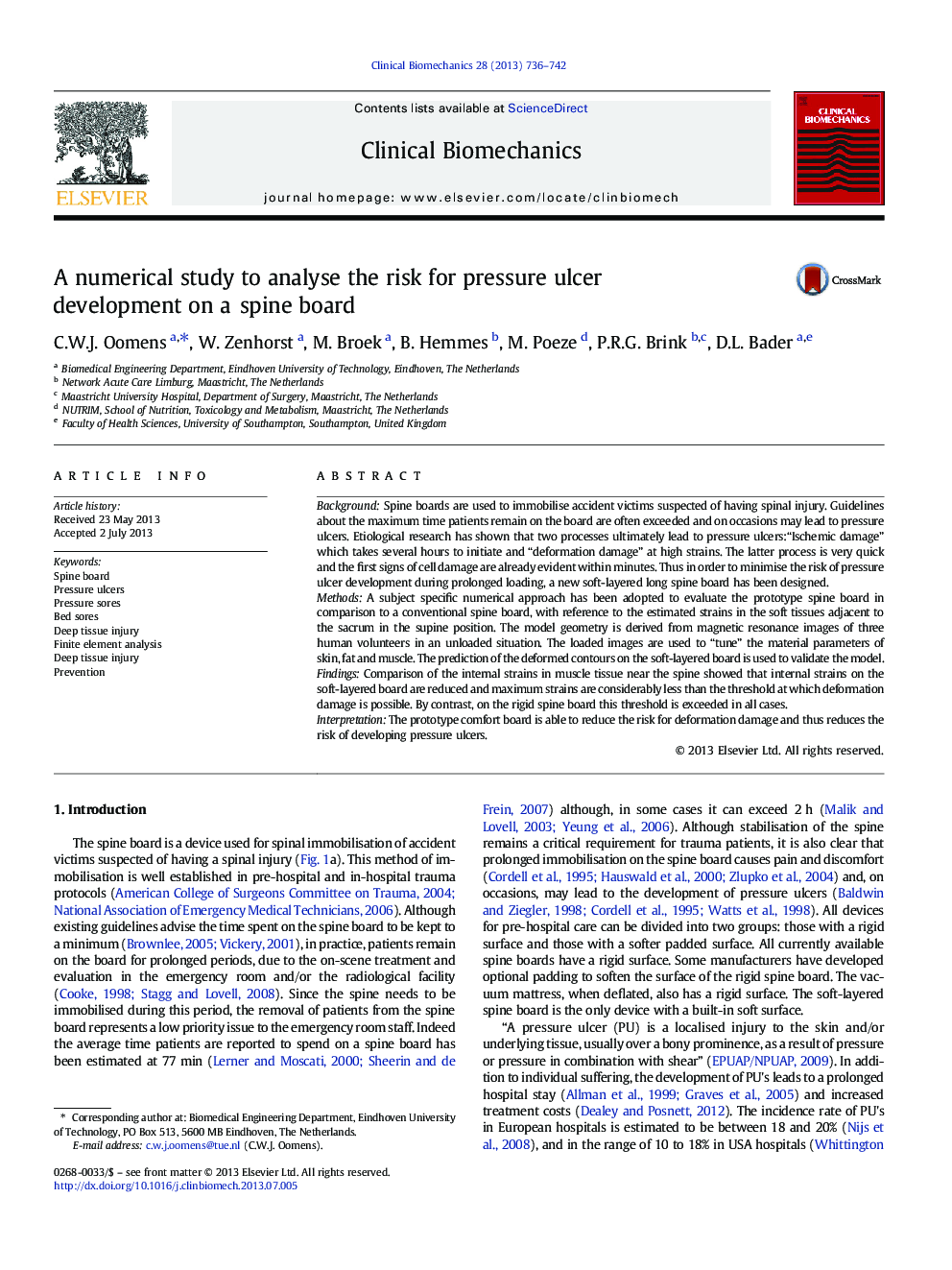| Article ID | Journal | Published Year | Pages | File Type |
|---|---|---|---|---|
| 4050446 | Clinical Biomechanics | 2013 | 7 Pages |
BackgroundSpine boards are used to immobilise accident victims suspected of having spinal injury. Guidelines about the maximum time patients remain on the board are often exceeded and on occasions may lead to pressure ulcers. Etiological research has shown that two processes ultimately lead to pressure ulcers:“Ischemic damage” which takes several hours to initiate and “deformation damage” at high strains. The latter process is very quick and the first signs of cell damage are already evident within minutes. Thus in order to minimise the risk of pressure ulcer development during prolonged loading, a new soft-layered long spine board has been designed.MethodsA subject specific numerical approach has been adopted to evaluate the prototype spine board in comparison to a conventional spine board, with reference to the estimated strains in the soft tissues adjacent to the sacrum in the supine position. The model geometry is derived from magnetic resonance images of three human volunteers in an unloaded situation. The loaded images are used to “tune” the material parameters of skin, fat and muscle. The prediction of the deformed contours on the soft-layered board is used to validate the model.FindingsComparison of the internal strains in muscle tissue near the spine showed that internal strains on the soft-layered board are reduced and maximum strains are considerably less than the threshold at which deformation damage is possible. By contrast, on the rigid spine board this threshold is exceeded in all cases.InterpretationThe prototype comfort board is able to reduce the risk for deformation damage and thus reduces the risk of developing pressure ulcers.
